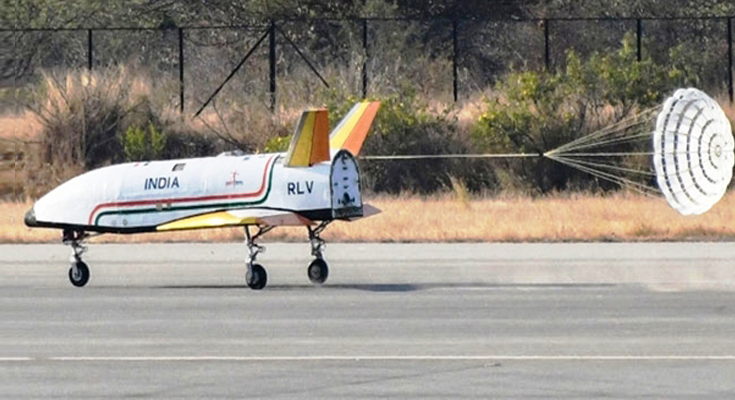JNS: The Indian Space Research Organisation (ISRO) is set to conduct an experimental flight of its ‘Pushpak’ RLV at the Aeronautical Test Range in Challakere near Chitradurga, Karnataka, on Friday morning.
The event, scheduled for tomorrow morning, will see ISRO Chairman S Somnath and other senior officials in attendance.
Pushpak, described as a sleek, SUV-sized winged rocket, marks India’s ambitious foray into the reusable rocket segment. The rocket is slated to lift off from the Chalakere Runway at 7 am, marking the third flight of Pushpak and a crucial test of its robotic landing ability in challenging conditions.
ISRO Chairman S Somanath expressed, “The Pushpak launch vehicle is India’s bold attempt to make access to space more affordable. It is India’s futuristic Reusable Launch Vehicle, where the most expensive part, the upper stage housing all the expensive electronics, is made reusable by safely bringing it back to Earth.”
He further elaborated, “Later, it could even perform refueling of in-orbit satellites or retrieve satellites from orbit for refurbishment. India seeks to minimize space debris, and Pushpak is one step towards that as well.”
The first test of Pushpak was conducted in April last year with a scaled-down version of the launch vehicle. This time, the scaled-down version of the RLV will be carried to an altitude of about 4.5 kilometers by an Indian Air Force helicopter and released after achieving predetermined parameters.
The vehicle’s landing, accounting for wind speed, velocity, and other obstacles, is crucial, with the onboard navigation system assisting in landing at a high velocity of 350 kmph, overcoming obstacles around the runway. The test will help determine approach and landing maneuvers using the integrated navigation, guidance, and control system.
The development of the reusable launch vehicle by ISRO is expected to significantly reduce launch expenditure and aid India in its space exploration missions. The technology involved includes accurate navigation hardware and software, Pseudolite system, Ka Band Radar altimeter, NavIC receiver, sensors, indigenous landing gear, aerofoil honeycomb fins, and a brake parachute system.




